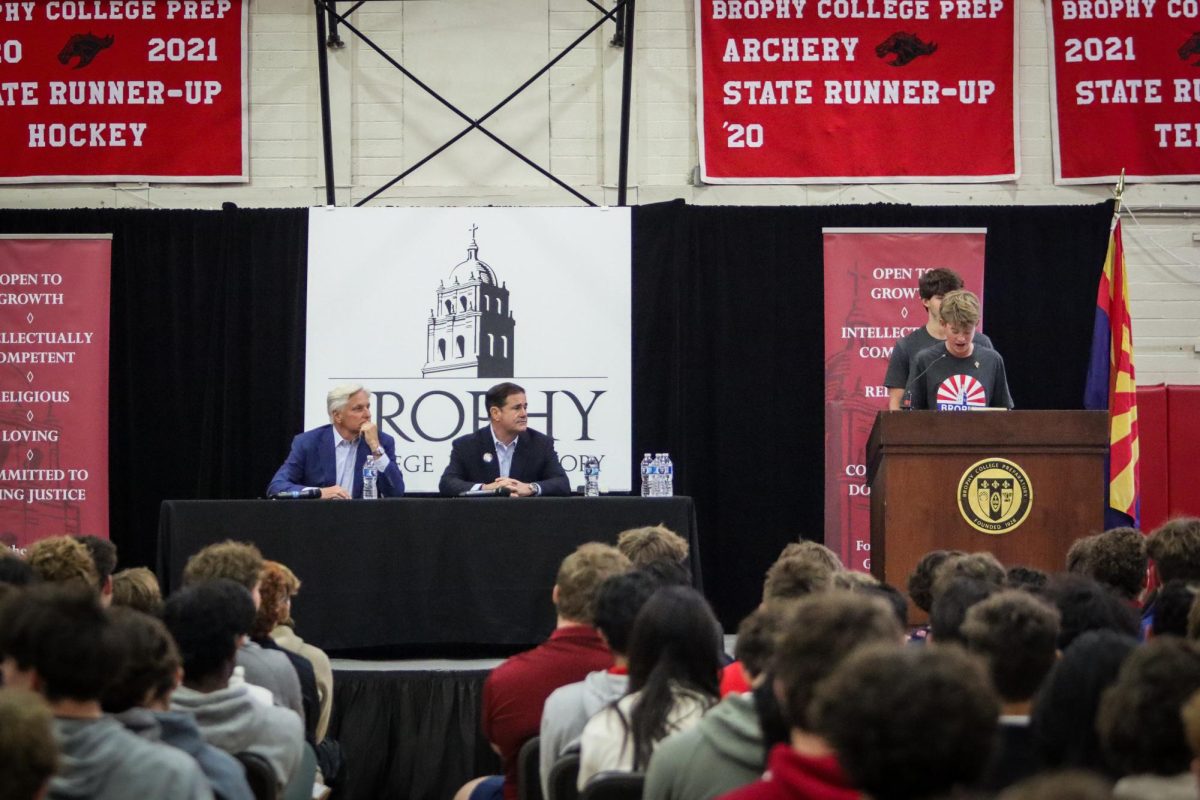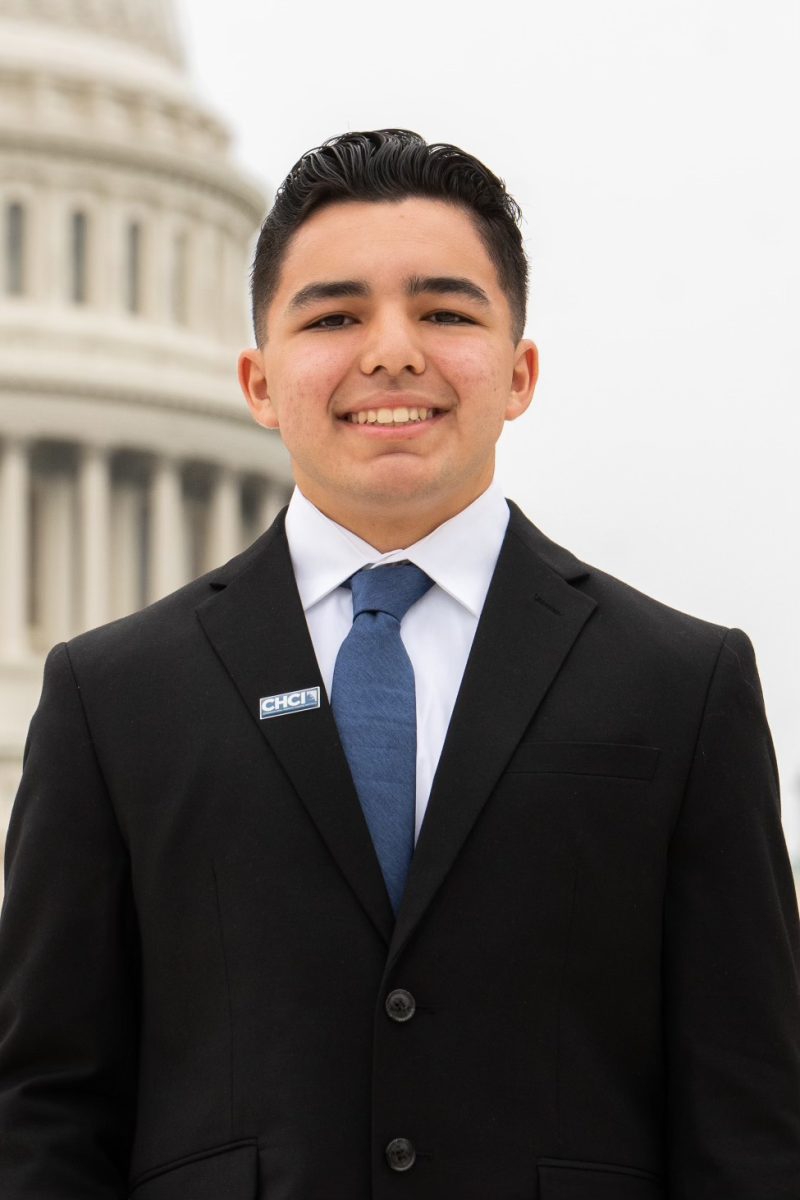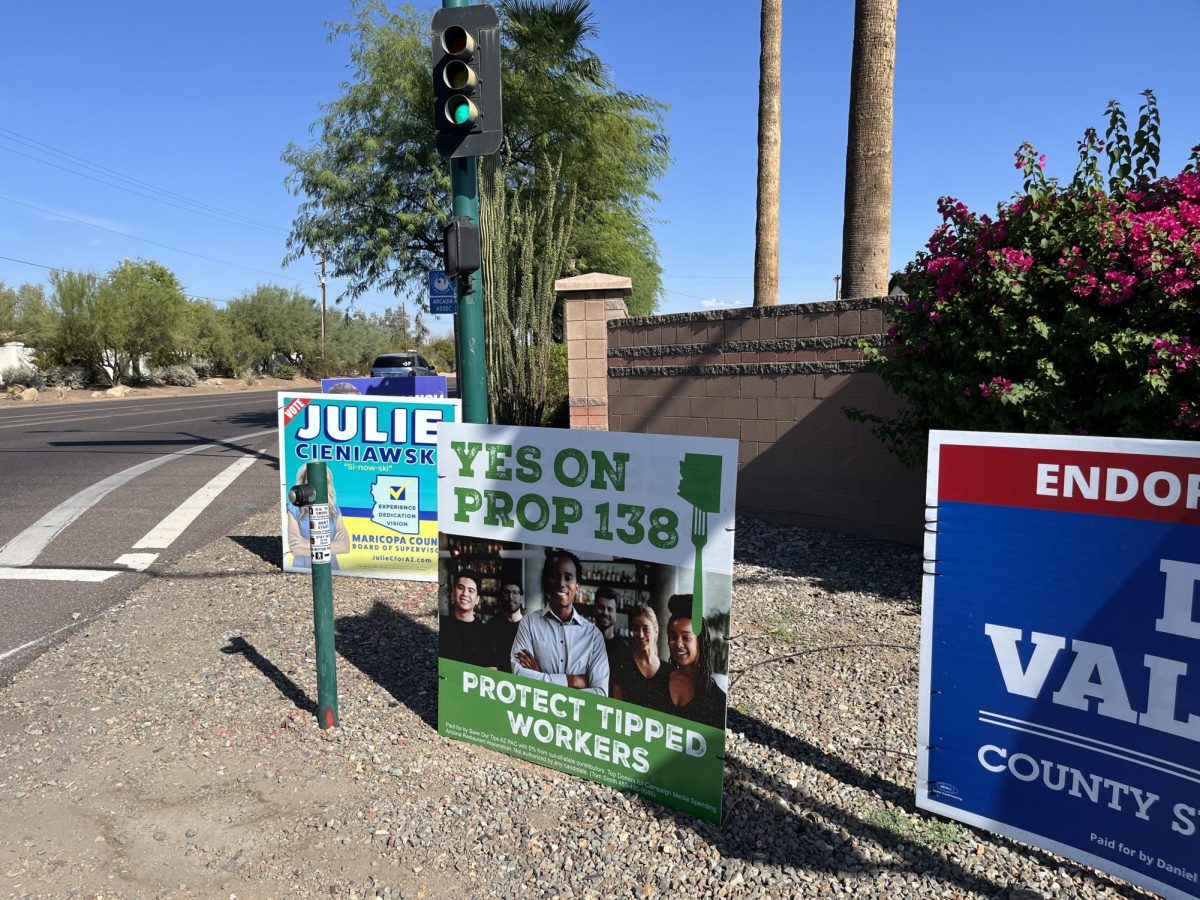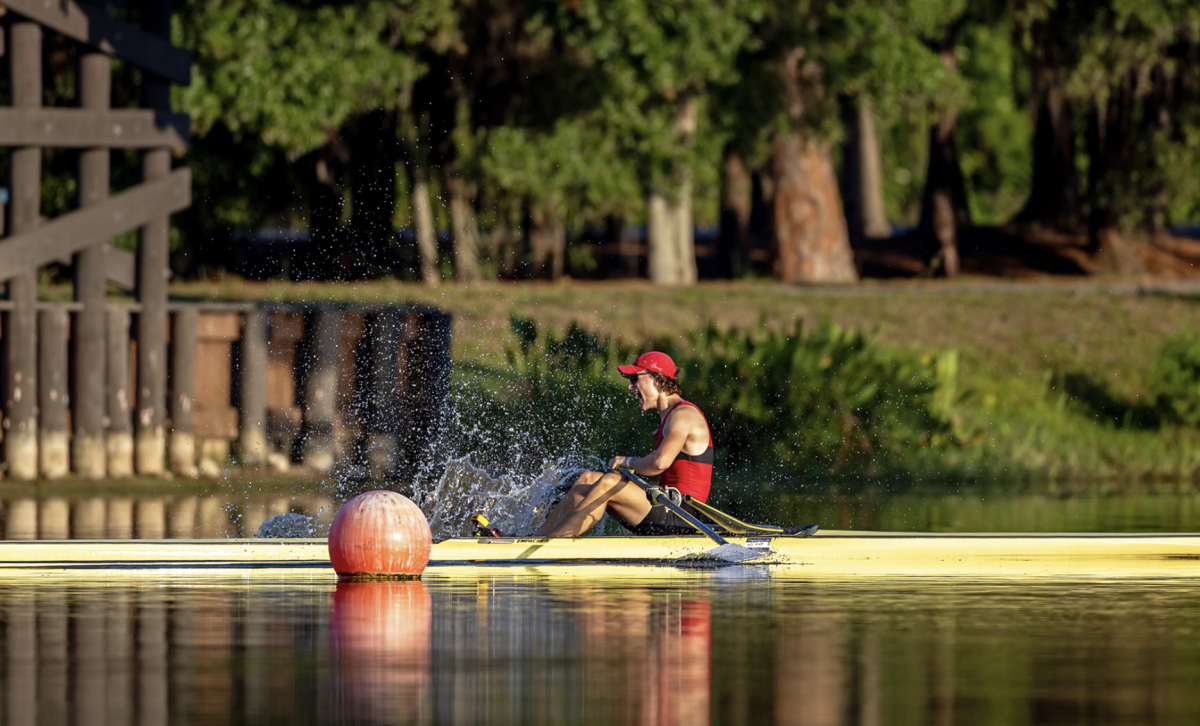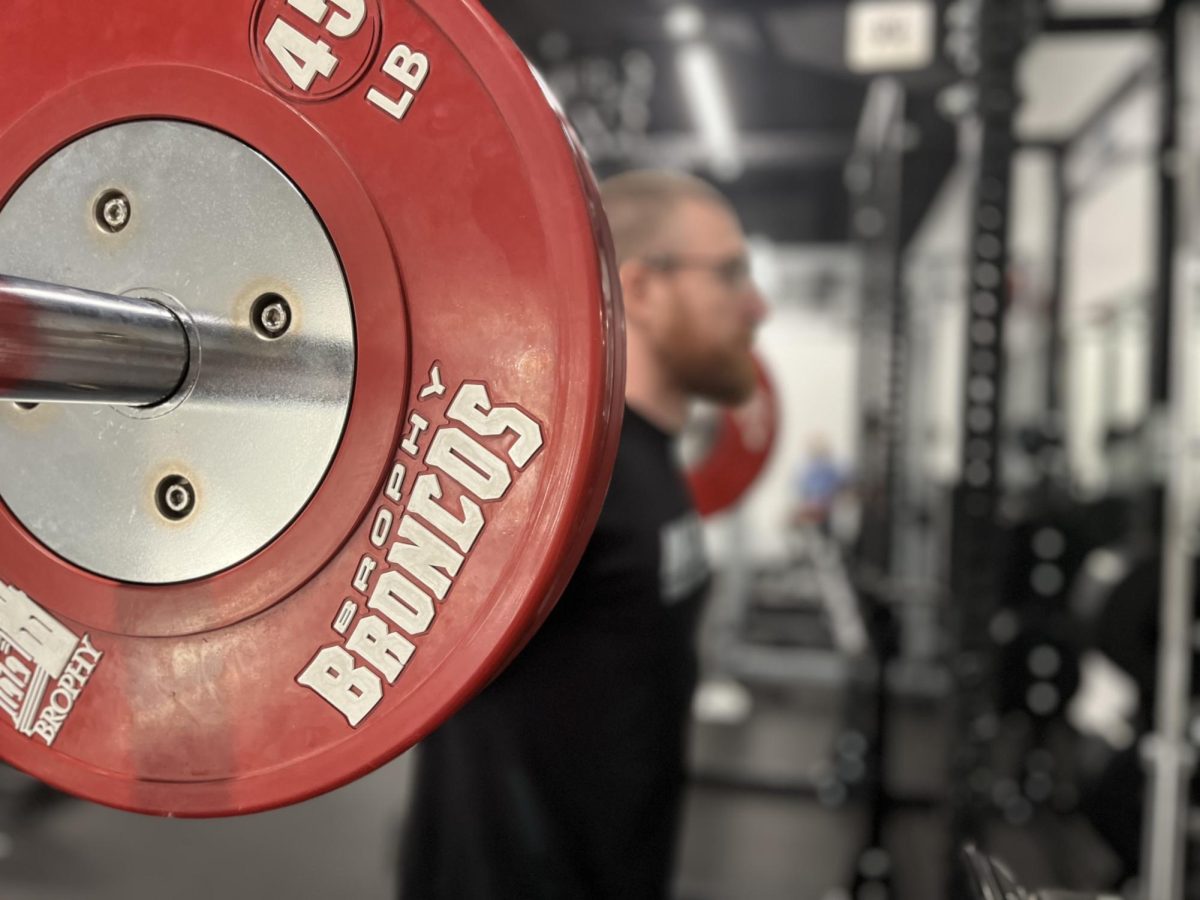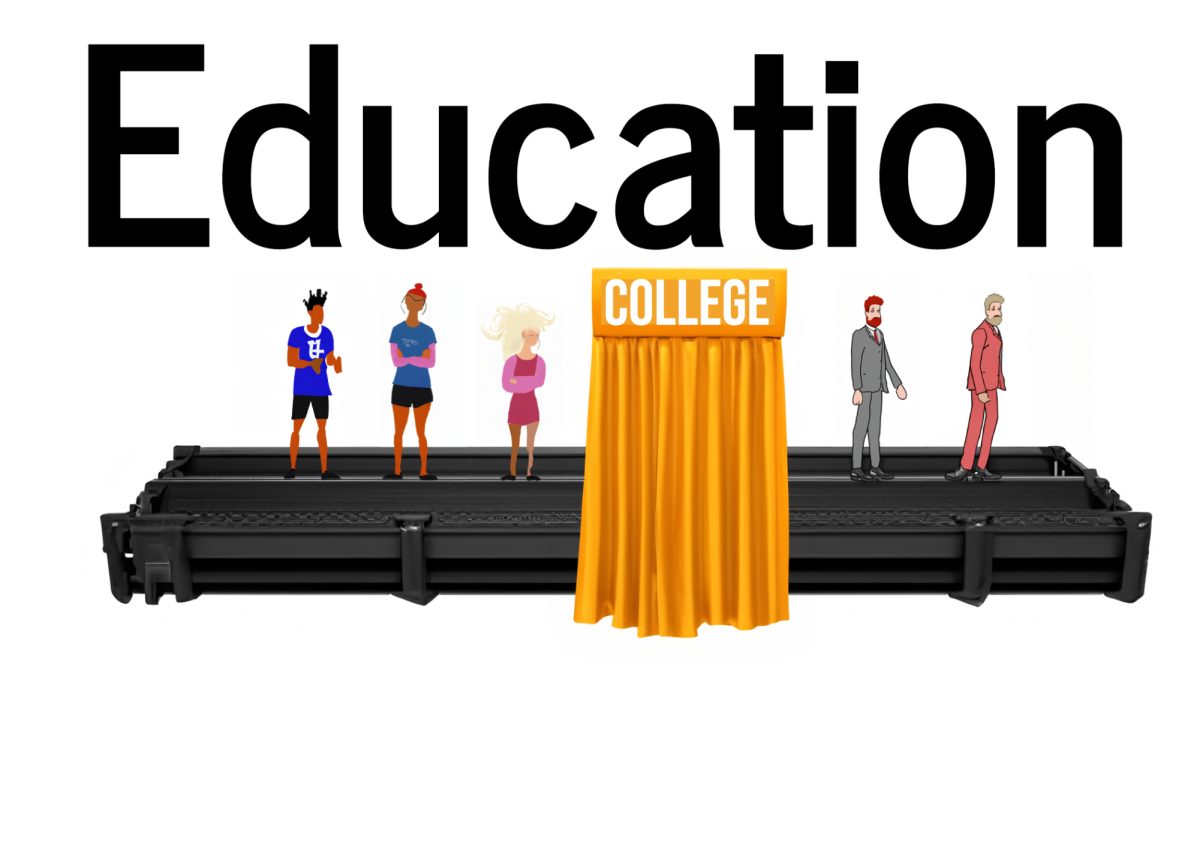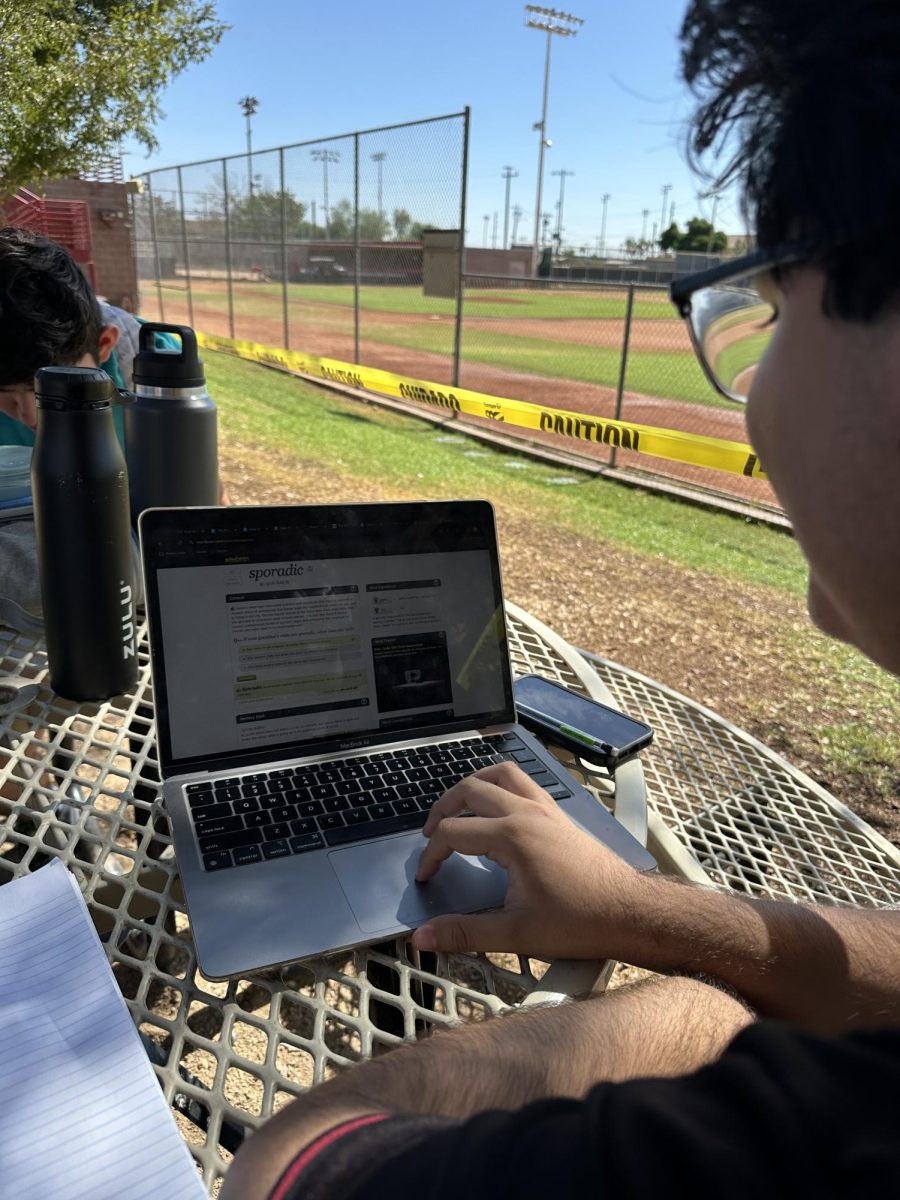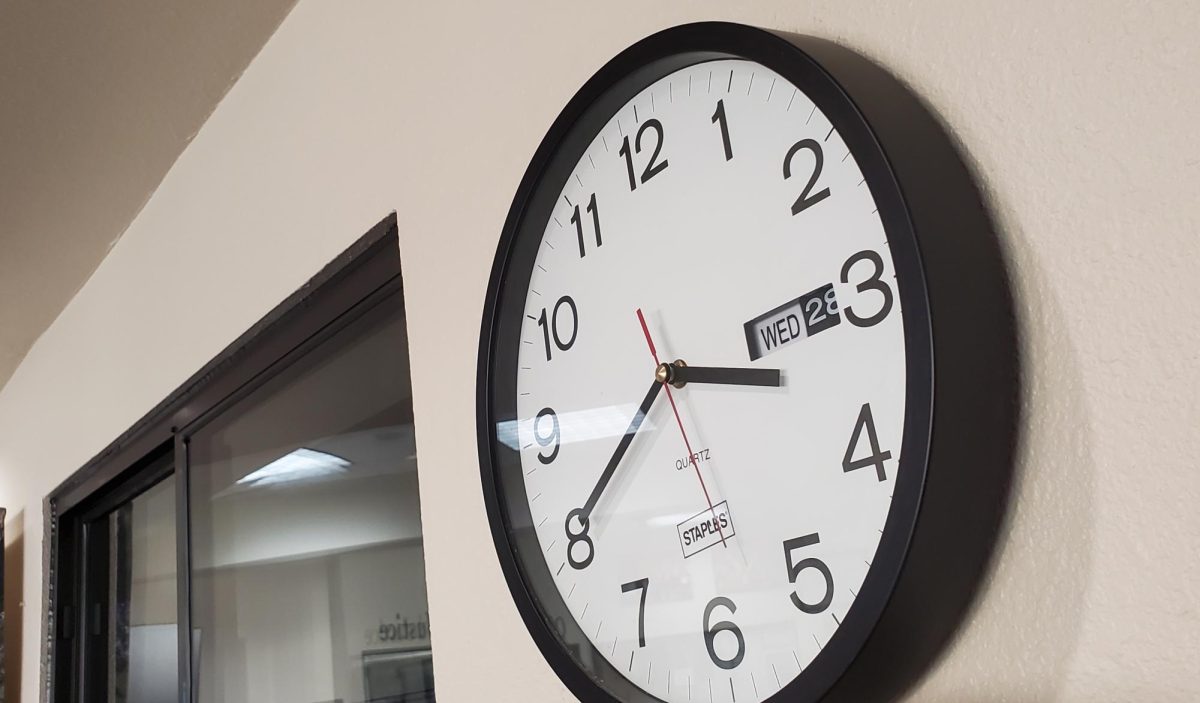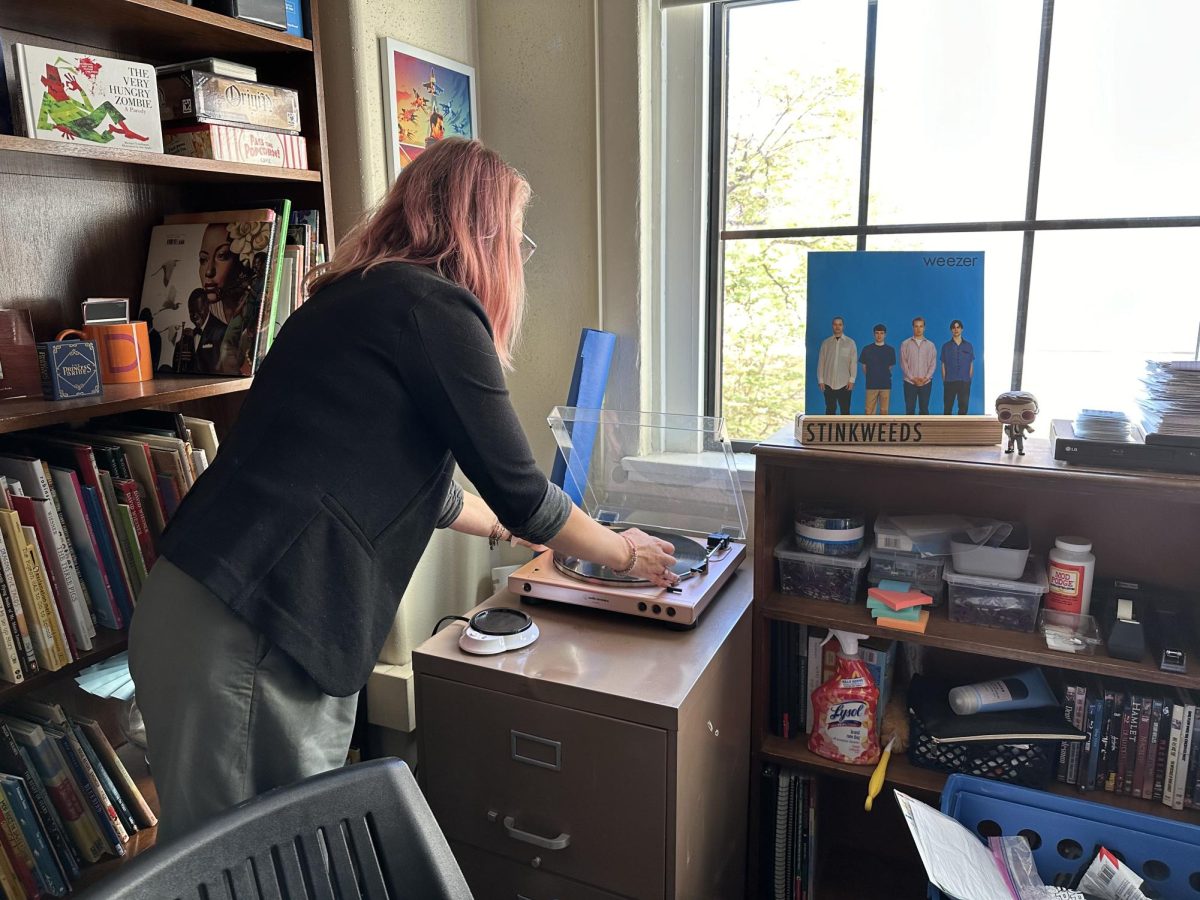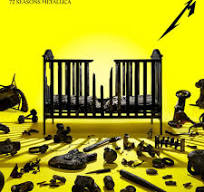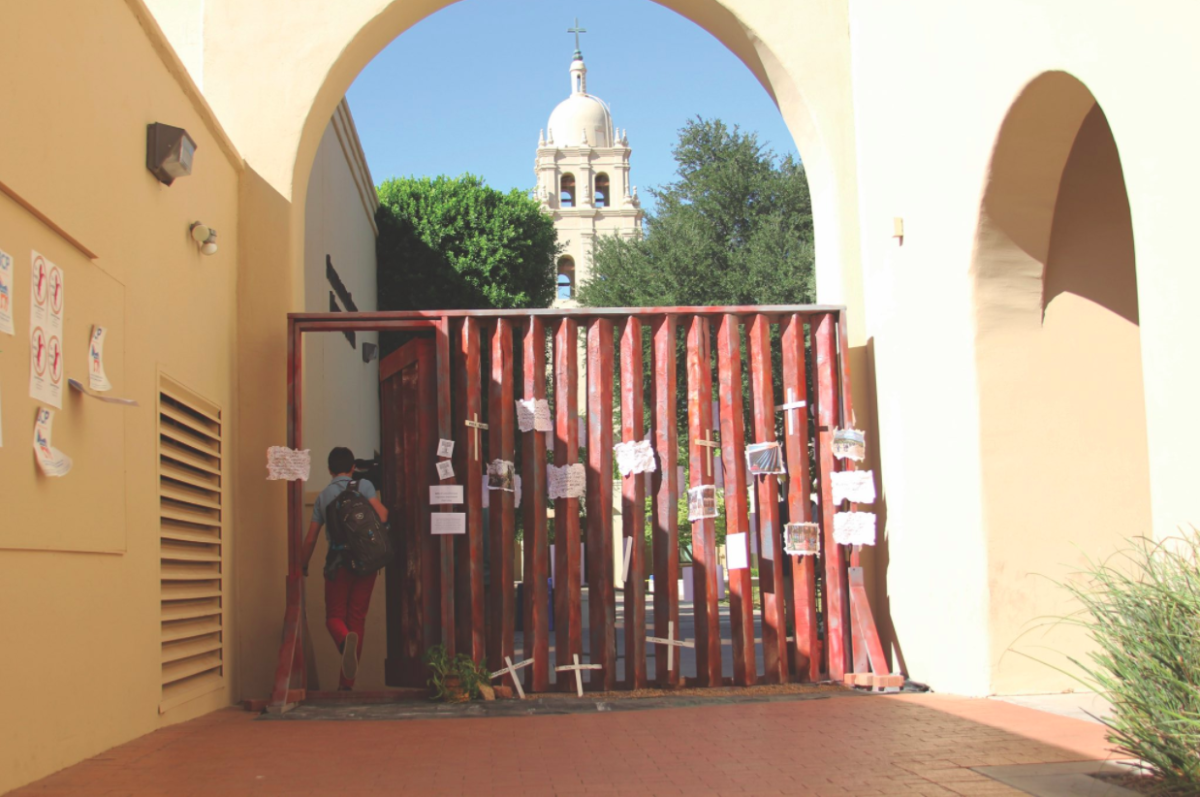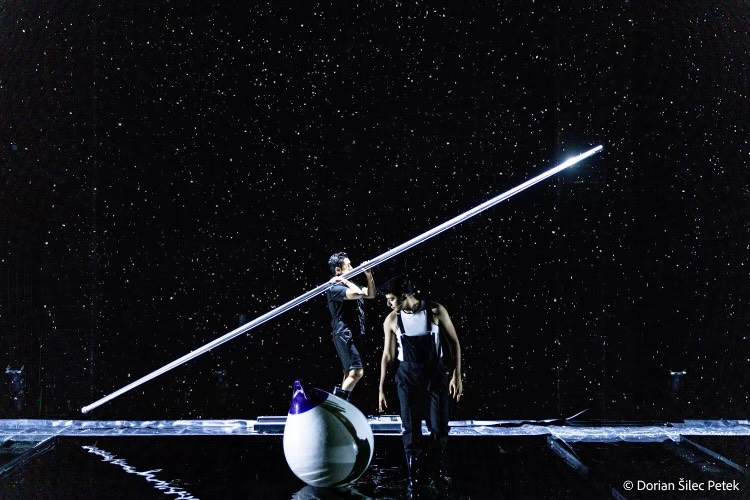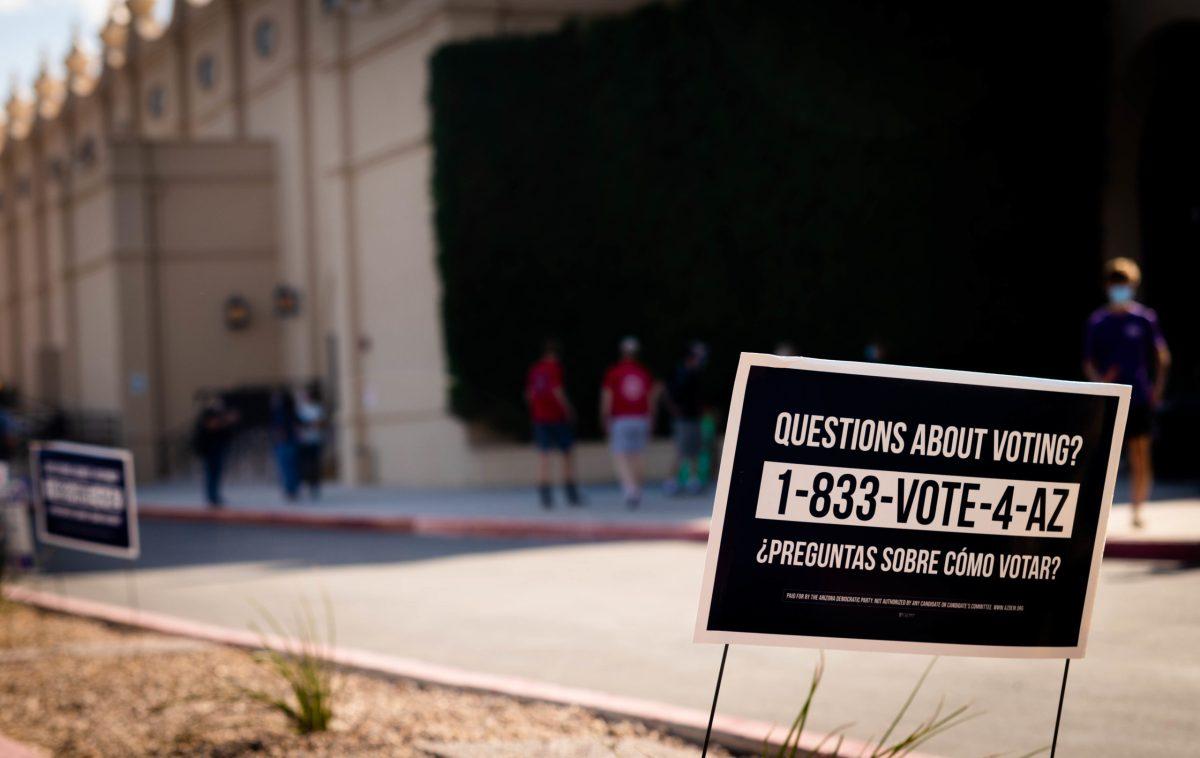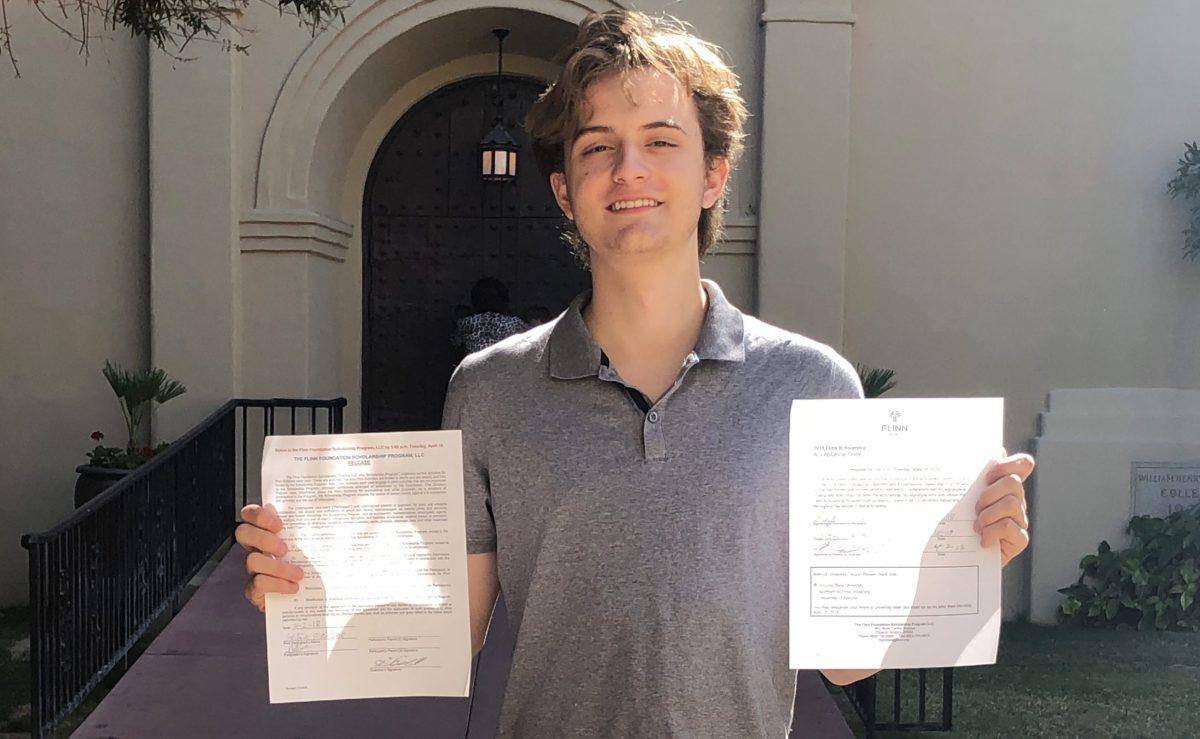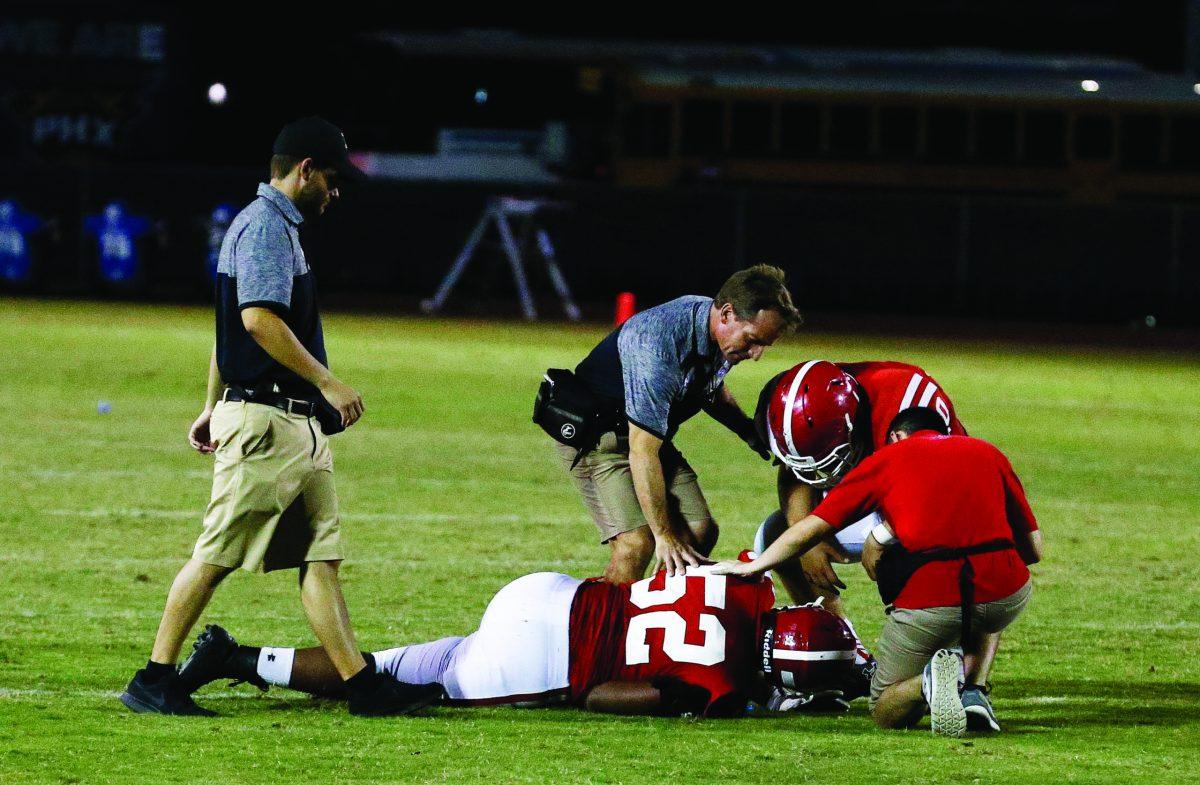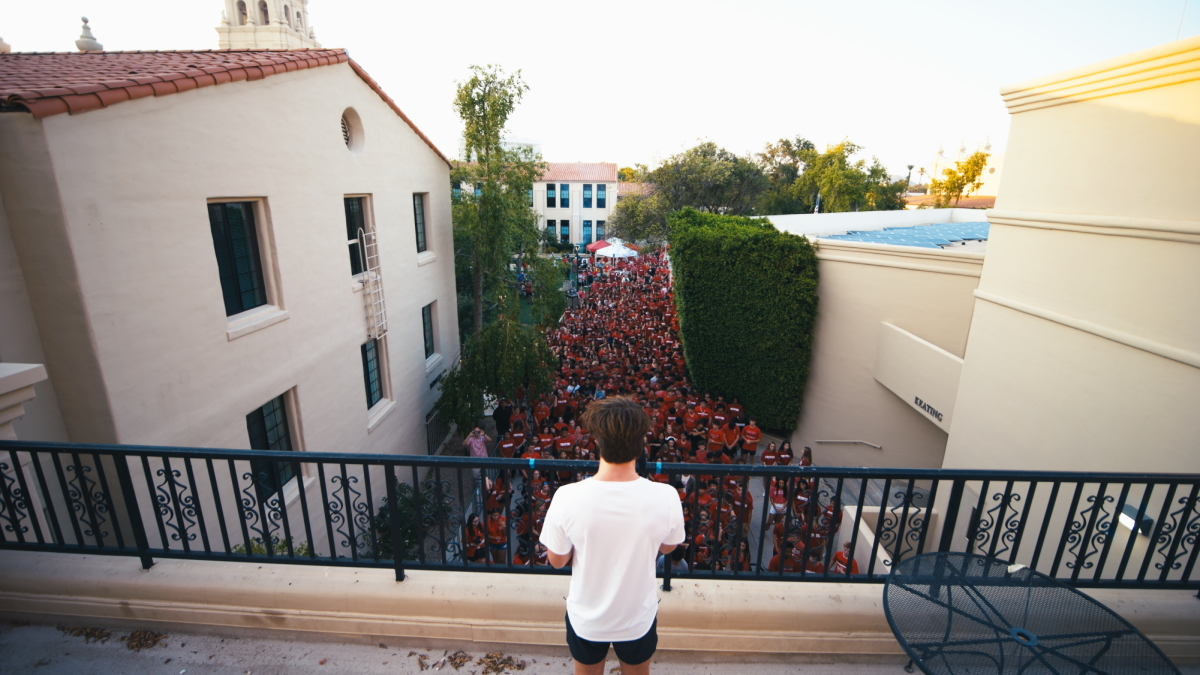Photo by Josh Spano ’18 | A student walks through the wall in the Freeman Arch on October 26th, 2017. The wall was put up and monitored by Kino Teens throughout the day.
By Graham Armknecht ’18
THE ROUNDUP
Students came between a wall and a hard place on Thursday morning, as students a part of Kino Teens stood to patrol a wall they had recently constructed.
Lines began to form as teachers and students, like Dane Nielson ’20, acted as mock border patrol agents, asking for student IDs and where each student was from.
“After the past election, there has been a lot of controversy surrounding immigration and the issues of the border,” Nielson said. “The purpose is to show students the struggle of immigrants and to bring more attention to the issue.”
However, not all students viewed the wall as a way to bring attention to the issue. Instead, they viewed it as an inconvenience to their day. Carson Mullins ’19 expressed his displeasure with the wall.
“I hate the wall,” Mullins said. “The actual point of a border wall would be to keep illegal immigrants out. This acts as an inconvenience and makes no real point.”
The day the wall was implemented, the Free Speech club met to discuss the wall and the issues surrounding it.
Freddy Soto ’18 backs the wall because it displays the plight of immigrants who come here.
“You complain about the wall, but you don’t realize the reality it represents,” Soto said. “My parents had to find their own way around the border in order to make a better life for themselves and their kids.”
Michael Richmann ’18 expressed that he feels there is a liberal bias on campus.
“The school constantly pushes liberal bias on us,” Richmann said.
While the issue polarized students, Sterling Sourk ’18 said had a more neutral stance.
“The whole wall thing is kinda hilarious to me,” Sourk said. “I’m neutral to the issue, because I used Poet’s Alley instead. Seeing how everyone is getting really agitated over the issue is funny to me because it’s such a small thing.”
In many cases, students found the issue of the wall was a bit more complicated than just being for or against it.
“I don’t have a problem with the wall,” said Nico Pacioni ’18. “But, the message around the wall is clouded because nobody at the wall knew what the message was. If nobody knows what the message is, then the whole point becomes clouded. I went through the wall four times and asked why the wall was up all four times out of genuine curiosity, but nobody answered me.”
Pacioni elaborated, saying that he thought republican students were underrepresented.
“Republican students happen to be under represented,” he said. “It shocks me because they are very under supported by teachers and administrators.”
Andrew Nahom ’18 said he agreed with the complexity of the issue, and he addressed that the issue isn’t as binary as it’s made out to be.
“This is an argument where both sides are arguing right past each other,” Nahom said. “For some, the wall is an argument of sovereignty and nationality. As a country, yes we have the right to make a border secure. For some, the wall is an affront to human dignity. This doesn’t have to be a binary argument. We shouldn’t get caught up in the extreme arguments of xenophobia vs open borders. We can ‘build the wall’ of sovereignty and ‘build the bridge’ of human immigration reform.”
Mr. Bob Ryan expanded on the complexity of the issue with the wall and the perception of a liberal bias on campus.
“There are certain truths that we believe in as a Catholic school,” Mr. Ryan said. “The church is clear with ideas on broad guidelines on how to solve the immigration dilemma. Depending on the issue, the church can align with the position of a certain political party and sometimes not.”
Even with the strife it caused, Mr. Ryan is pleased with the conversations because of the wall, but is concerned with students feeling restricted in expressing their opinions.
“I saw a lot of really healthy conversation and dialogue, although I think some students were upset by the wall,” he said. “I was privy to a conversation at lunch with a group of students who were upset by it, and they expressed how they felt like their opinions weren’t encouraged. If boys don’t feel free to express their opinion or to ask questions and express disagreement, that’s concerning.”
Mr. Jose Leyba ’94, the faculty advisor for Kino Teens and the coordinator of the wall project, discussed how the wall itself was meant to bring up sharp emotions and feelings.
“The experience was meant to bring a lot of emotion,” Mr. Leyba said. “There will be a table next week so that those feelings and experiences can transform into dialogue.”
Mr. Leyba continued, speaking about how the harmful wall put up wasn’t in the Freeman Arch, but in our minds.
“If the first impression of the wall was just, ‘I disagree’ then a wall goes up mentally,” Mr. Leyba said. “Mental and psychological walls are even worse than the actual wall. How can we discuss this issue if you won’t be open to discussion?”
However, according to a survey conducted by Kino Teens a week following the wall, 50 out of 96 people who responded said they would be open to a round table discussion at lunch regarding these issues.
The survey also asked what Grad at Grad was most connected to the wall. A majority of students responded that the wall was connected to either Open to Growth or Committed to Doing Justice.
When asked on a scale of 1-5, 1 being strongly disliked and 5 being strongly liked, 66 responded between the range of 1 and 3.
Students also responded with their feelings about the wall. One response read, “I feel like it gave a 100% negative opinion on the wall and trump. Although I agree there should not be a wall, I don’t think you can impose your opinion of the situation onto the students.”
Another response read, “Thought it was a good message and lesson about the struggles immigrants face.”

